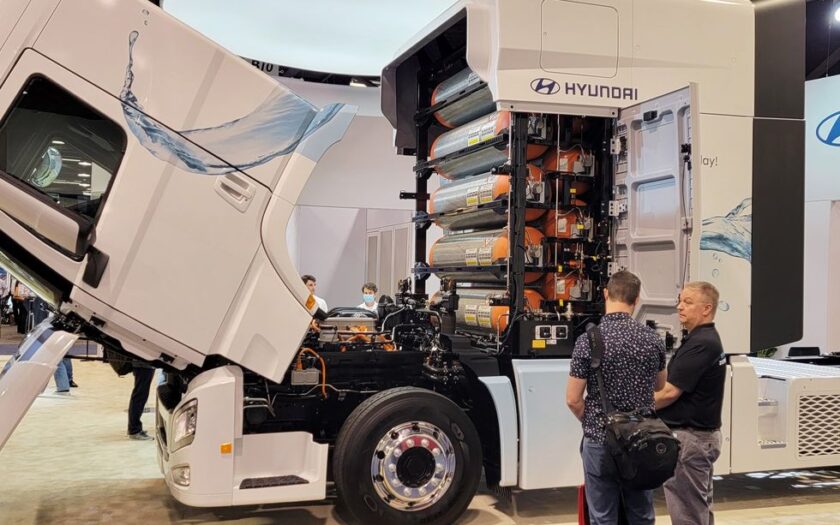Hyundai’s XCIENT: Pioneering Hydrogen’s Rise in Class 8 Trucks
In an era where electric vehicles have become commonplace on our roads, the underdog of hydrogen fuel-cell electric vehicles (FCEVs) is emerging as a formidable player with the potential for widespread adoption. The countdown timer for hydrogen’s breakthrough in the transportation industry seems to be ticking closer to zero. During the recent Advanced Clean Transportation Expo in Anaheim, California, the eco-conscious alt-fuel community echoed a resounding sentiment: “Hydrogen is the future!”
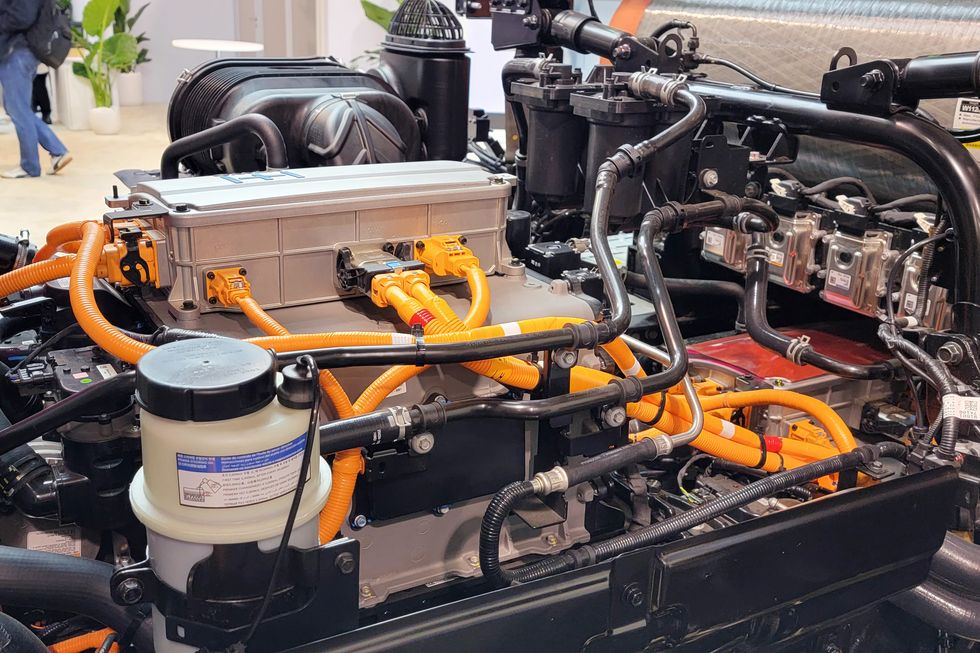
Leading the charge in this hydrogen revolution is Hyundai, a company renowned for its innovation and forward-thinking approach. Hyundai’s XCIENT, a Class 8 truck, is spearheading this transformation. Set to become a part of the Port of Oakland’s fleet this summer, the XCIENT is poised to mark a significant milestone in the realm of commercial transport, blending the rugged essence of traditional trucking with cutting-edge technology.
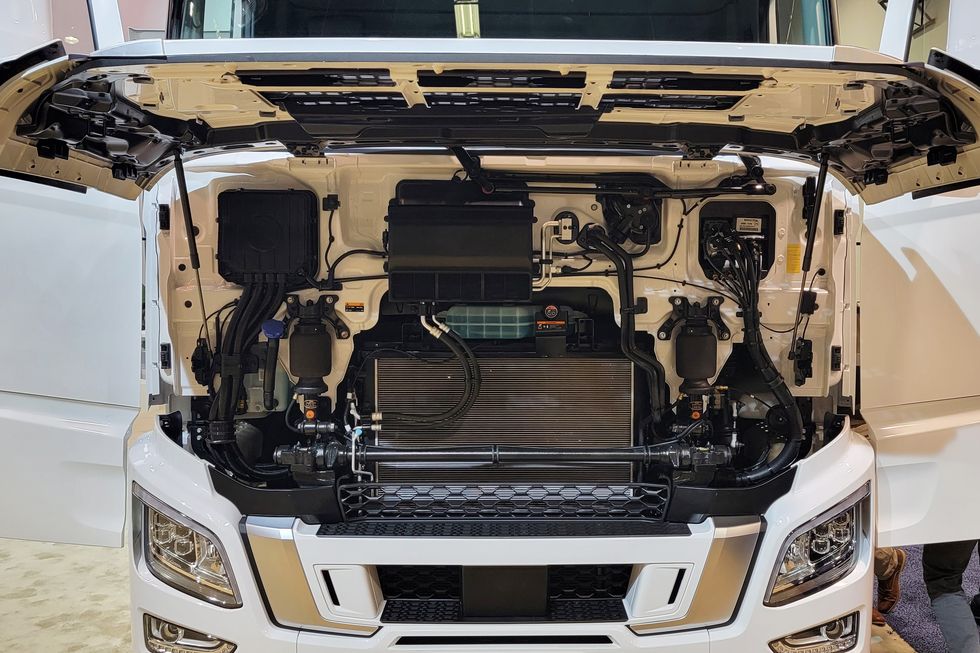
Imagine ten hydrogen tanks elegantly arranged in a robust frame, towering behind the cabin, almost caressing the 13-foot-high roof fairing. These tanks collectively house over 462 gallons of compressed hydrogen, pressurized to over 10,000 psi, delivering a robust 151 pounds of pure, eco-friendly fuel. It takes just 30 minutes to transition from empty to fully charged. These tanks not only fuel the XCIENT but also power two hydrogen fuel-cell systems nestled beneath the cabin. These systems are similar to those propelling Hyundai’s remarkable Nexo FCEV crossover, reengineered to meet the Class 8 duty cycle’s rigorous demands. Each system features two 121-horsepower stacks, combining forces to deliver an impressive 483 horsepower performance.
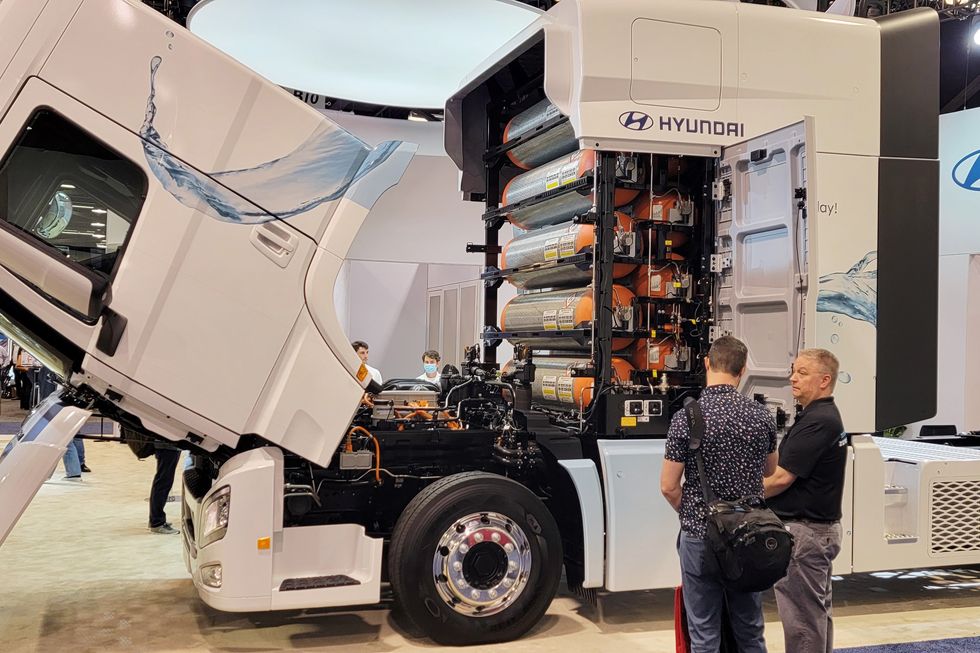
However, the real showstopper is not the tanks or stacks but what lies in between them. Hyundai takes a novel approach, ensuring a steady power output by utilizing the fuel-cell system to charge a high-voltage, high-capacity battery. This ingenious solution powers the electric motors that set the wheels in motion. But it’s not just any battery; it’s a robust 72.0 kWh powerhouse, comprising three 24.0-kWh lithium-ion packs. It’s an innovation that catapults the XCIENT to a league of its own.
So, what about performance? Nestled between these frame rails sits an electric motor, a true powerhouse generating a jaw-dropping 469 horsepower and a whopping 1650 pound-feet of torque. It’s a revelation that sets the XCIENT apart from traditional diesel Class 8 trucks.
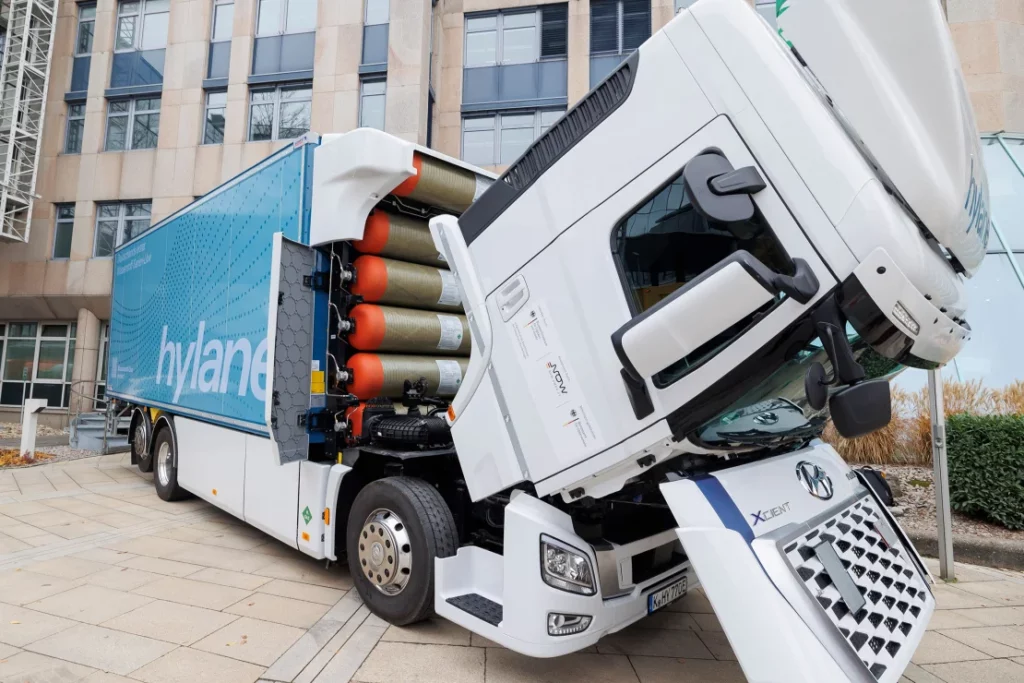 Now, let’s talk about the transmission. Hyundai equips the XCIENT with an Allison six-speed automatic transmission that offers the perfect balance of performance and efficiency. However, there’s a twist—the XCIENT’s top speed is a modest 57 mph, and it typically operates within the first five gears. But there’s more to the story. Thanks to cruise-control wizardry, the XCIENT can push the boundaries, reaching a gravity-assisted top speed of 66 mph when descending steep slopes. What’s even more exciting is that the transmission housing integrates a mechanical retarder to gracefully slow down the truck when the battery is at its peak, and regenerative braking isn’t in play. This forward-looking design hints at a future where traditional gearboxes are rendered obsolete. In the coming years, electric motors will conquer the axles, eliminating the need for mechanical retarders and taking regenerative braking to new heights.
Now, let’s talk about the transmission. Hyundai equips the XCIENT with an Allison six-speed automatic transmission that offers the perfect balance of performance and efficiency. However, there’s a twist—the XCIENT’s top speed is a modest 57 mph, and it typically operates within the first five gears. But there’s more to the story. Thanks to cruise-control wizardry, the XCIENT can push the boundaries, reaching a gravity-assisted top speed of 66 mph when descending steep slopes. What’s even more exciting is that the transmission housing integrates a mechanical retarder to gracefully slow down the truck when the battery is at its peak, and regenerative braking isn’t in play. This forward-looking design hints at a future where traditional gearboxes are rendered obsolete. In the coming years, electric motors will conquer the axles, eliminating the need for mechanical retarders and taking regenerative braking to new heights.
Now, let’s dive into the drivetrain. The XCIENT boasts a 6×4 drivetrain configuration, the gold standard for U.S. Class 8 trucks. When the tanks are brimming and the load reaches the impressive 82,000-pound gross combination weight limit for electric tractor-trailers, Hyundai proudly claims that the XCIENT can effortlessly conquer 450 miles of open road.
The real beauty of the XCIENT lies not just in its powerful performance but in its compassion for the planet and its consideration for the driver. Traditionally, the life of a trucker behind the wheel of a turbocharged diesel behemoth meant hours of deafening noise, bone-rattling vibrations, and relentless harshness. It’s an 11-hour daily symphony of cacophony, not to mention another 13 hours of restless noise when the truck is parked.
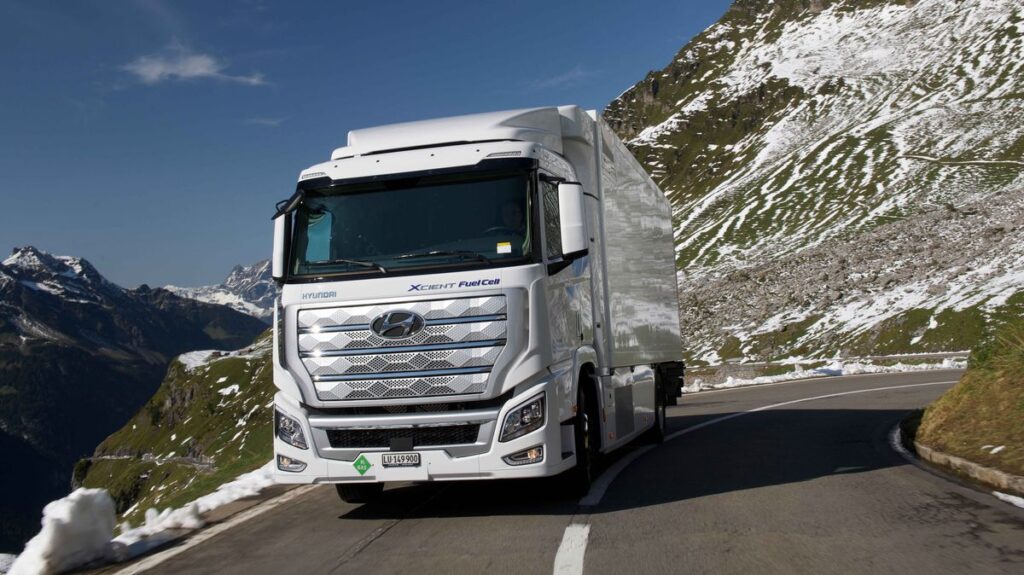 However, the XCIENT is a game-changer for both drivers and the environment. Its idling, robust acceleration, and smooth cruising are accompanied by nothing more than an occasional hushed whisper. The XCIENT is so refined and driver-friendly that it transforms the heavy-duty driving experience into something akin to a leisurely Sunday drive.
However, the XCIENT is a game-changer for both drivers and the environment. Its idling, robust acceleration, and smooth cruising are accompanied by nothing more than an occasional hushed whisper. The XCIENT is so refined and driver-friendly that it transforms the heavy-duty driving experience into something akin to a leisurely Sunday drive.
Moreover, the XCIENT is a game-changer for those outside the truck. It’s specifically tailored for the drayage market, where trucks navigate short, regular routes centered around industrial hubs and hydrogen refueling stations. These trucks often linger in residential areas near ports, filling the air with disruptive noise and noxious fumes. The XCIENT’s hydrogen power is a breath of fresh air, promising not only a quieter soundscape for residents but also cleaner air for all.
As for the cost, Hyundai hasn’t revealed the XCIENT’s price tag yet, but it expects current state and federal clean-vehicle subsidies to make the XCIENT FCEV cost-competitive with current diesel models over a service life of six to eight years. This is excellent news for fleet operators, truck drivers, and residents in areas with high volumes of truck traffic. The dawn of a new era in trucking is here, and Hyundai’s XCIENT is leading the way.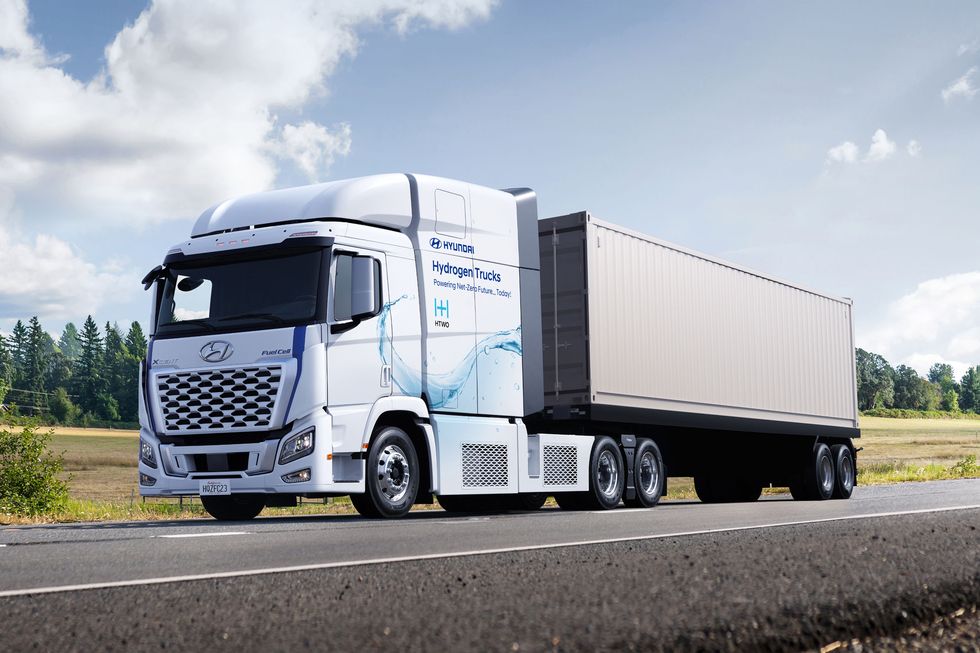
In conclusion, Hyundai’s XCIENT is at the forefront of the hydrogen revolution, redefining Class 8 trucking with cutting-edge technology and a commitment to a greener future. This innovative powerhouse is not only transforming the driving experience for truckers but also promising a quieter, cleaner environment for all. It’s a true game-changer, offering a glimpse of the promising future of eco-friendly transportation.

